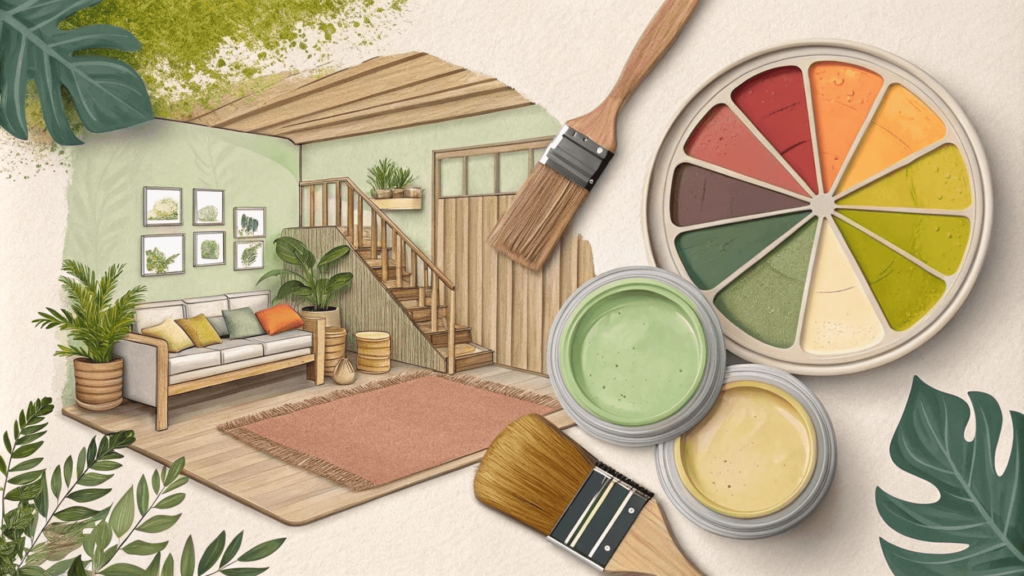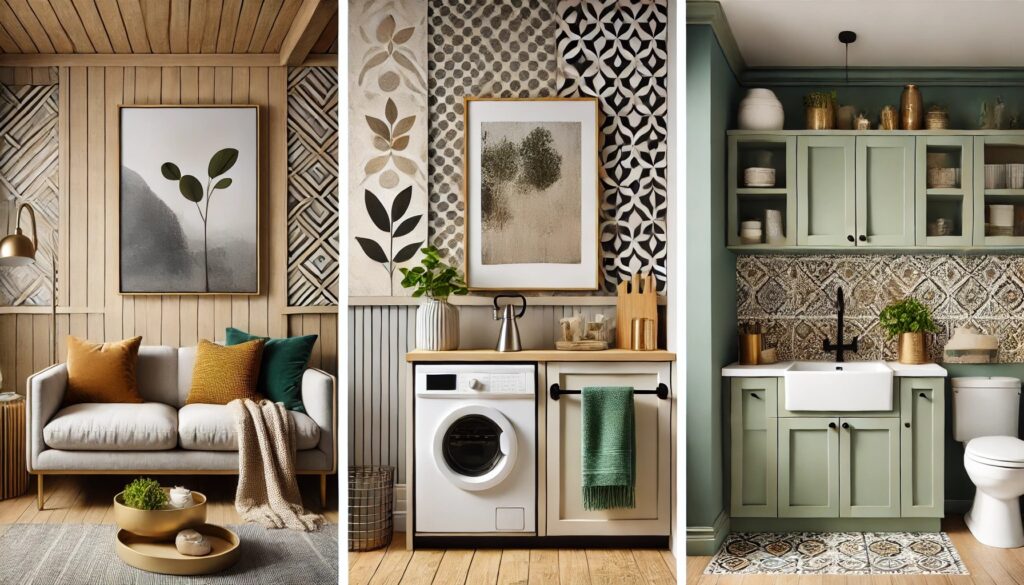Are you looking to refresh your living space without harming the environment? Traditional paints often contain harmful chemicals that can affect both your health and the planet. The good news? You have options.
In this comprehensive guide, you’ll learn everything about DIY eco-friendly paint and finishing options. From making your own natural paint to choosing the best sustainable products, we’ve got you covered.
Understanding Eco-Friendly Paint Options
Traditional paints can release harmful chemicals into your home for years after application. According to a study by This Old House, conventional paints can contain up to 300 toxic compounds.
What Makes Paint Eco-Friendly?
Eco-friendly paints stand out through several key features:
- Low or zero VOCs (Volatile Organic Compounds)
- Natural ingredients
- Sustainable manufacturing processes
- Biodegradable packaging
Types of Natural Paint Bases
- Water-Based Natural Paints
- Lowest environmental impact
- Easy cleanup
- Minimal odor
- Milk-Based Paint
- Traditional formula
- Excellent coverage
- Biodegradable ingredients
- Clay-Based Solutions
- Natural pigmentation
- Breathable finish
- Moisture-regulating properties
Creating Your Own Natural Paint at Home
Making your own paint isn’t just eco-friendly – it’s cost-effective too. According to Earth Pigments, homemade natural paints can cost 50% less than store-bought alternatives.
Basic Natural Paint Recipe
You’ll need:
- 2 cups calcium carbonate
- 1 cup clay
- 1-2 cups water
- Natural pigments
- Plant-based binder
Mix dry ingredients first, then slowly add water until you reach your desired consistency. Add pigments last for custom colors.
Natural Wood Finishing Techniques
Natural finishes can protect wood while maintaining its beauty. Popular options include:
- Tung oil
- Linseed oil
- Beeswax
- Natural shellac
Application Tips for Best Results
- Clean surface thoroughly
- Sand in the direction of the grain
- Apply thin, even coats
- Allow proper drying time between layers
Commercial Eco-Friendly Paint Alternatives
Several brands lead the sustainable paint movement. Dream of Home recommends looking for these certifications:
- Green Seal
- LEED certification
- USDA BioPreferred status
Maintenance and Longevity
Proper maintenance ensures your eco-friendly finishes last longer. Key tips include:
- Regular dusting with natural cloths
- Gentle cleaning with plant-based solutions
- Prompt touch-ups when needed
- Annual assessment for reapplication needs
Environmental Impact and Benefits
Choosing eco-friendly options reduces:
- Carbon footprint
- Indoor air pollution
- Chemical waste
- Environmental toxins
Frequently Asked Questions
What are the benefits of using eco-friendly paint?
Eco-friendly paints improve indoor air quality, reduce environmental impact, and often provide better coverage than conventional options. They’re particularly beneficial for people with sensitivities to chemicals.
How do I know if a paint is truly eco-friendly?
Look for third-party certifications like Green Seal or LEED. Check the VOC content – it should be under 50 grams per liter for truly eco-friendly options.
Are eco-friendly paints more expensive than traditional paints?
While the initial cost may be higher, eco-friendly paints often require fewer coats and last longer, making them cost-effective over time.
Can I use eco-friendly paint in high-moisture areas like bathrooms?
Yes, many eco-friendly paints work well in bathrooms and kitchens. Look for options with natural anti-microbial properties like clay-based paints. Some milk paints also perform excellently in humid conditions when properly sealed.
What is the difference between low-VOC and zero-VOC paint?
Low-VOC paints contain less than 50 grams of volatile organic compounds per liter. Zero-VOC paints contain less than 5 grams per liter. Both are better choices than conventional paints, which can contain up to 150 grams per liter.
How do I properly dispose of leftover eco-friendly paint?
Even natural paints should be disposed of responsibly. Let leftover paint dry completely, then check local regulations. Many eco-friendly paints can be composted or disposed of with regular waste once fully dried.
Are there specific brands that are known for eco-friendly paints?
Several reputable brands specialize in eco-friendly paints. Popular options include:
- ECOS Paints
- Real Milk Paint Co.
- BioShield
- Anna Sova
- AFM Safecoat
Can I mix eco-friendly paints with traditional paints?
It’s not recommended to mix different types of paint. Eco-friendly and traditional paints often have different chemical compositions that may react poorly together. Stick to one type for best results.
What are the best practices for applying eco-friendly finishes?
Follow these key steps:
- Test in a small area first
- Apply in thin, even coats
- Use natural-bristle brushes for oil-based finishes
- Maintain proper ventilation during application
- Allow adequate drying time between coats
How long does eco-friendly paint take to dry compared to conventional paint?
Drying times vary by product and conditions. Generally:
- Water-based eco paints: 1-2 hours between coats
- Natural oil finishes: 24-48 hours between coats
- Milk paint: 30 minutes to 1 hour between coats
- Clay paint: 2-4 hours between coats
Conclusion
Making the switch to eco-friendly paint and finishing options is a smart choice for your health and the environment. Start small with a test project, and you’ll likely never go back to conventional products.
Ready to start your eco-friendly painting project? Remember to:
- Choose the right products for your needs
- Prepare surfaces properly
- Follow application best practices
- Maintain your finishes regularly
For more detailed information about specific products and techniques, visit Backdrop Home or One Day Paint.



